

A blanket of snow covers the Eloise McDonald Propst Guest Center in an exquisite sight rarely seen in Huntsville.
On the cover: An Eastern Towhee perches among the autumn leaves at the Garden.




A blanket of snow covers the Eloise McDonald Propst Guest Center in an exquisite sight rarely seen in Huntsville.
On the cover: An Eastern Towhee perches among the autumn leaves at the Garden.

Autumn is a time of great change. While it may look like simply an end to the color brought by blooms of spring and summer, it is a time of renewal and preparation for winter’s rest. Look closer, and color radiates from unexpected corners: leaves tumbling to the ground, wild berries bursting with energy for woodland foragers, and the golden glow of autumn harvests. The Garden is teeming with activity during this deceptively quiet time.
During this season of gathering, we invite you to come to the Garden to share one-of-a-kind activities and experiences with your loved ones. In November and December, Galaxy of Lights returns with displays to enchant and delight guests of all ages. Join in the holiday fun by taking a stroll on Walking Nights or a leisurely cruise on Driving Nights, all under the scintillating displays that combine traditional favorites with new surprises.
Then in March, a new Garden exhibit will unfold: ORIGAMI IN THE GARDEN, created by Santa Fe artists Jennifer and Kevin Box in collaboration with world-renowned origami artists. Inspired by the art of folding paper to make elegant objects, ORIGAMI IN THE GARDEN transforms simple concepts into large-scale metal sculptures that will find their place among our own plant collections.
In this issue of the Garden Columns, you can dive into the Garden’s plant conservation collections, learn about a new professional development program for STEM teachers, find tips on how to enjoy your garden at home in the colder months, and explore the world of Tweetsville, our newest addition to the Children’s Garden.




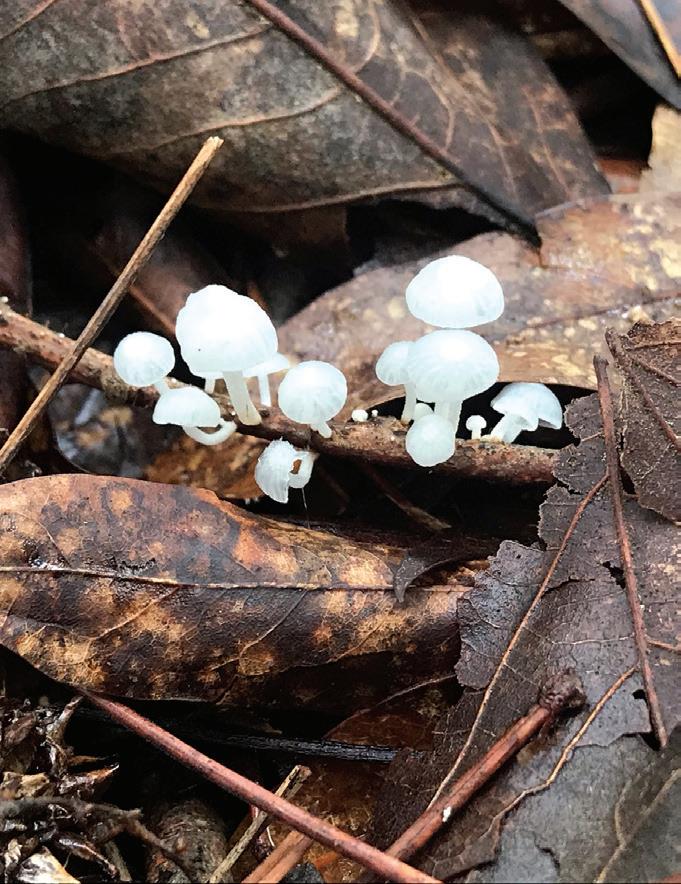

We hope this issue inspires you to take time to enjoy and connect with nature. From every age to every interest level, the Garden offers opportunities to learn, engage, and be inspired by the plants that increase our quality of life wherever they grow.
See you at the Garden!
Tweetsville

rely
healthy
David Bier, Chair
Carol Tevepaugh, Vice Chair

Kathi Tew, Vice Chair
Jeff Showalter, Treasurer
Carla Bossard, Asst. Treasurer
Leta Hornbuckle DeMaioribus, Secretary
Elaine Alspach

Penny Billings
Gary Bolton
Lynn Collyar
Mary Griffith
Tharon Honeycutt
Hank Isenberg
Wes Kelley Brenda Martin Eric Mills
Will Pylant
Lindsay Rice
Lana Ritch
Ruchi Singhal
Beth Sippel
Brandy Smith
Julie Stephens
Jennifer Wu
Open year-round, the Huntsville Botanical Garden contains diverse ecosystems to explore within its 118 acres. From grassy meadows to woodland paths, aquatic habitats to stunning floral collections, the Garden invites guests of all ages to discover the beauty and wonder of the natural environment.

A 501(c)(3) nonprofit organization, the Garden is an accredited botanic garden by Botanic Gardens Conservation International and an accredited arboretum by ArbNet, as well as a member of the American Public Gardens Association, the North American Plant Collections Consortium, and the American Horticultural Society.
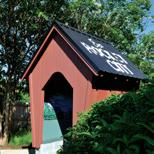 Sue Wagner
Sue Wagner

Galore!

Sprouts:



Wreaths

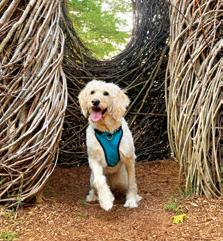
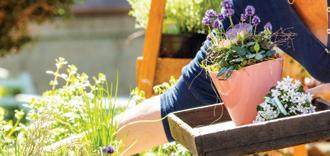


Garlands


Style
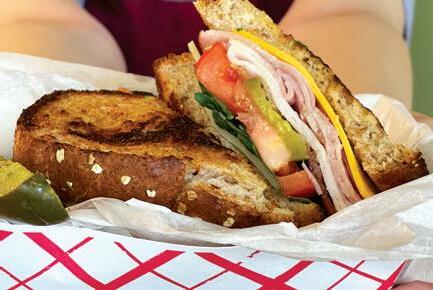

 Photo by Kendra Storm
Photo by Anna Catherine Dewberry
Photo by Anna Catherine Dewberry
Photo by Kendra Storm
Photo by Kendra Storm
Photo by Anna Catherine Dewberry
Photo by Anna Catherine Dewberry
Photo by Kendra Storm
For many students, education starts with inspiration.
A spark of curiosity can ignite a new passion; a triumphant feeling of discovery can lead to a desire to know more. Often, the most memorable teaching moments happen when the student hardly knows they’re learning at all.
The challenge for an educator is to provide these moments of inspiration that will excite and engage their students—while still meeting rigorous curriculum standards. As pressure increases for teachers to do more with limited resources, this challenge becomes not only more urgent but more difficult, too. Particularly in Alabama, where public school students consistently score below the national average in math and science, educators need additional resources if they are going to both teach and inspire the next generation.
Soon, some of these resources will come from the Huntsville Botanical Garden, where a new initiative is underway to provide professional development opportunities to public school teachers across the state.
“We are in the early stages of this program,” says Sue Wagner, Chief Executive Officer of the Garden. “But we are very excited for what is to come.”
Wagner has always been an educator. Prior to transitioning to her career in education at museums and public gardens, she spent 12 years teaching in a classroom setting. There, she saw her colleagues shying away from teaching science, not because they did not value the subject, but because they lacked confidence in teaching it.
“That really stuck with me,” says Wagner. “Ever since my days in the classroom, I have asked myself: How can we help teachers feel more prepared to teach STEM subjects so that, in turn, their students are more likely to get excited about science and math?”
Flash forward to the present day. Wagner saw how the Garden could be a part of the solution, and ideas soon turned to action
with the addition of Karen Colvin to the team as the Garden’s Manager of STEM Curriculum and Programs.
Herself a retired teacher with over 30 years of experience, Colvin is also familiar with the challenges that educators face every day. “You might not have enough supplies for a certain experiment, or you could be working on a limited budget, or maybe you don’t really understand the topic yourself,” she explains. “As a teacher, there are always roadblocks to overcome, and all you want to do is find the best way around them so your students can have a meaningful experience. At the end of the day, it’s always all for the students.”
At the Garden, Colvin is now leading the development of a collaborative program that will help teachers overcome the roadblocks they face in teaching STEM subjects in kindergarten through sixth grade. With an emphasis on teachers at Title I public schools, the program will provide educators with hands-on experiences that increase their confidence, content knowledge, and technical ability teaching environmental science both inside and outside their classroom walls.
Perhaps, for example, a teacher is confident naming the parts of a flower from a diagram but is unsure about identifying them on the plant itself. This program could be an opportunity to practice plant dissection with other environmental educators. Or if an educator needs help brainstorming hands-on activities that can be done in an urban school setting, this program could be a place to swap ideas with like-minded teachers facing the same challenges.
Importantly, the program will support the Alabama Course of Study and Next Generation Science Standards, two sets of content standards that guide STEM education in the state. Because these standards define the curriculum that public school teachers are required to teach, using them as a guide ensures that the program will be relevant and practical for its participants.
“We want this to be a program that meets teachers where they’re at and finds real solutions to real problems, based on the resources they really have,” says Colvin.
But the Garden is not developing the program alone. Partnering with the Friends of Birmingham Botanical Gardens and Bellingrath Gardens and Home has expanded the reach of the program outside of North Alabama to the central and southern regions of the state.
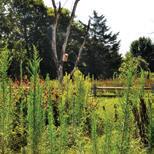

“We’re excited [to be involved] because it’s such a relevant topic in the twenty-first century, teaching STEM education,” says Dr. Tyler Mason, Director of Education and Visitor Experience at the Friends of Birmingham Botanical Gardens. “To be able to help develop a professional development program for teachers is really an opportunity to make an impact in our community and other communities across the state of Alabama.”
Dr. F. Todd Lasseigne, Executive Director of Bellingrath Gardens and Home in Mobile County, echoes Mason’s sentiments.
“I think horticulture is a great gateway to grab people and make them interested in environmental education because you can see the products,” he adds. “You can literally grow the plants.”
The nascent program has a long way to go before reaching teachers in every corner of Alabama. Currently, Wagner, Colvin, and the rest of the team are focusing on developing the program content, establishing evaluation protocols, and building relationships with administrators to garner support for the initiative.
“None of this is being done in a bubble,” says Colvin. “We are so grateful for the partners who have already signed on to be a part of the program. With all of us together, that’s when we’ll really have an impact.”
At the time of publication, the STEM teacher development program was in the early stages of planning.
To learn more about supporting this initiative, contact education@hsvbg.org.
Tour Tweetsville: Meadow at the Lewis Bird Watch An enclosed landscape designed to attract birds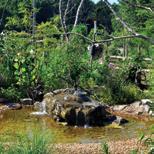
 By Matt Candeias, PhD
By Matt Candeias, PhD
With 40% of the world’s plants facing extinction in the coming century, plant conservation has never been more timely or more important. Plant extinction is a serious threat to biodiversity everywhere and will greatly impact our own quality of life if we don’t do something to turn the tide. For these reasons and more, the Huntsville Botanical Garden is committed to doing its part for plant conservation.
Plant conservation broadly falls under two categories. One category is in situ conservation, which means protecting plants in their natural habitat via land conservation and habitat restoration. The other category is ex situ conservation, which means protecting plants outside of their natural habitat via propagation and other horticultural efforts. Though both are vital for protecting plants from extinction, botanical gardens like ours are best situated for ex situ conservation efforts.
Here at the Garden, we take ex situ conservation very seriously.
By establishing conservation collections of rare plants across our 118 acres, we are doing our part to protect rare and endangered plants while simultaneously connecting visitors to plants and educating them about their importance. However, not all plant collections can be considered conservation collections.

Historically, botanical gardens around the world have managed conservation collections in much the same way a stamp collector manages a stamp collection: a small handful of specimens of a particular rare plant species would be tucked away in a display bed. Such a collection has minimal conservation value due to its lack of individuals and genetic diversity, which leads to inbreeding over time. Moreover, historically, little thought was given towards the actual recovery of the species— it was deemed sufficient simply to display the plants in a garden setting.
Today, the conservation community uses a set of guidelines that define what it means to be a conservation collection, placing plant species recovery at the center of focus. Broadly speaking, a conservation collection must have clear and agreed-upon strategies for collecting, maintaining, and propagating seeds, cuttings, and divisions of each plant.


A conservation collection must always prioritize accurate record keeping. In other words, we must know where the plants come from, how many individuals or “maternal lines” are being grown and propagated, and how much of the species’ natural range is represented within the collection. Record keeping can also help with propagation efforts, as individual plants can’t always be allowed to swap pollen freely. Instead, conservation staff must swap pollen carefully to maintain the genetic strengths of each original population.
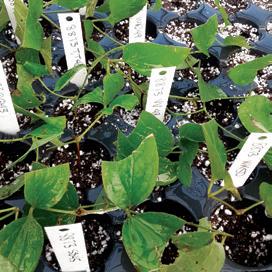
Ideally, conservation collections should also be shared among partnering institutions. Propagating and sharing plants with collaborators ensures that if something unexpected were to happen to one institution’s plants—such as a disease sweeping through the collection or an extreme weather event killing the specimens—backups are in place in other locations to ensure vital genetic diversity is not lost forever. In other words, we don’t put all of our rare and endangered eggs in one basket.
The Huntsville Botanical Garden is committed to making our own mark on the plant conservation world. As we build our conservation collections over time, our attention is turning to plants whose seeds cannot be stored in special storage facilities such as seed banks. Seed banks are vital to plant conservation efforts around the world, but they take a lot of space and resources to maintain. Additionally, not all plants produce seeds
that remain viable when stored for long periods of time. We call such plants “recalcitrant species,” and to conserve them, they need to be grown rather than seed banked. Across our 118 acres, we are building capacity to maintain conservation collections of recalcitrant species such as the critically imperiled, Alabamaendemic Boynton oak (Quercus boyntonii ) or the federally endangered Morefield’s leather flower (Clematis morefieldii ).
Through careful collection planning and lots of horticultural attention, the Garden is proudly building meaningful conservation collections of species so that guests will be able to enjoy them for generations to come. It is our hope that connecting with these plants will bring our guests to more deeply appreciate the amazing and unique botanical diversity that Alabama has to offer.
Matt Candeias was born and raised in the forests of the Northeast. Matt holds an M.A. in community ecology from SUNY Buffalo State and a PhD in ecology from the University of Illinois with extensive experience in plant
taxonomy and identification, habitat restoration, and research. Matt is also passionate about science communication in botany and ecology and is the author of In Defense of Plants: An Exploration into the Wonder of Plants and the host of the “In Defense of Plants" podcast. When not reading, writing, or talking about plants, Matt can usually be found hiking and photographing plants or trying to grow them in and around his home.

A place for birds to bathe and drink

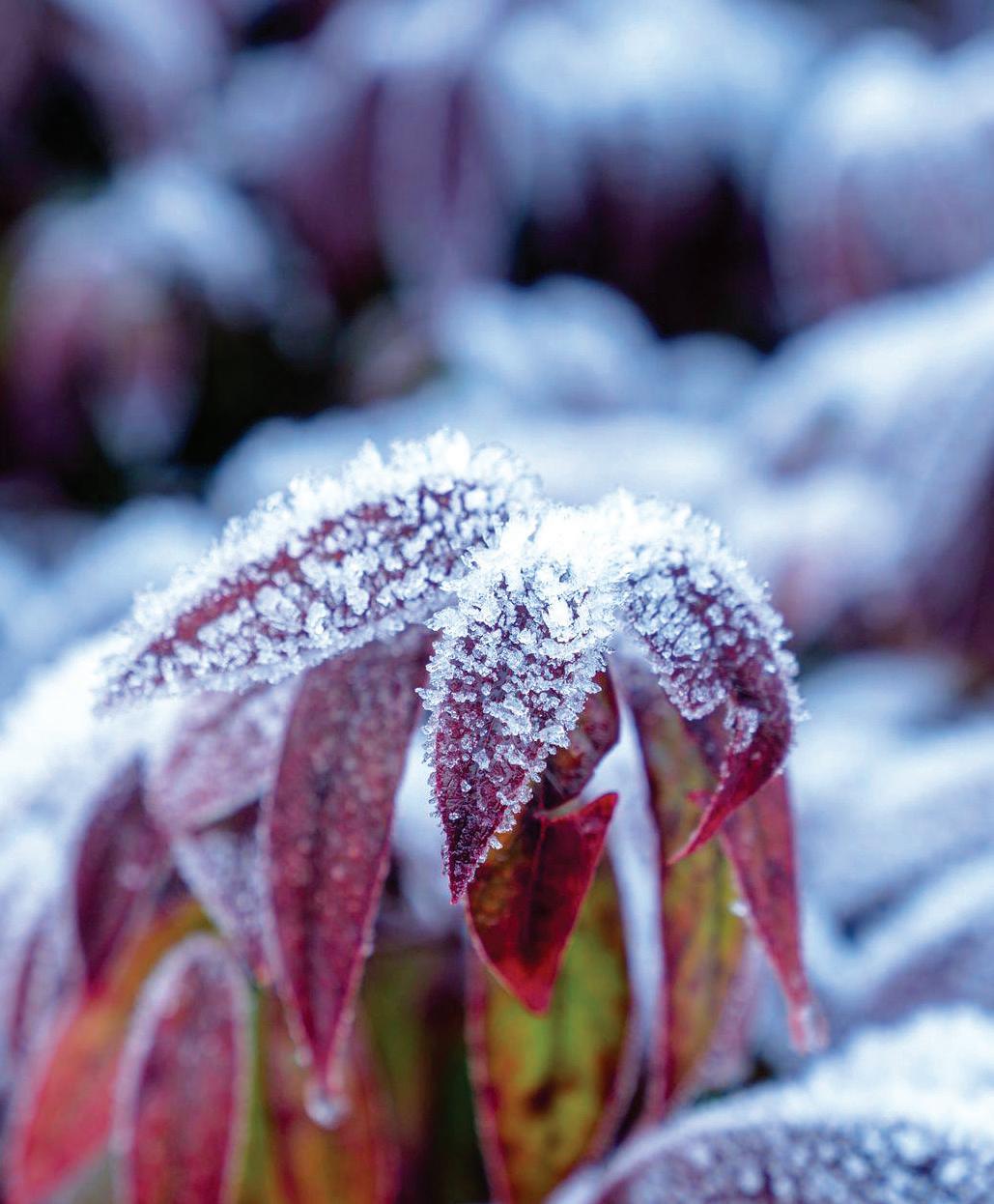
While many warm-weather plants have retreated, fall and winter are awash in colors and variety to enjoy. Evergreens can be trimmed and brought indoors as wreaths, garlands, and pieces for festive floral arrangements. Many types of evergreens such as hollies, winterberry, American beautyberry, and juniper are wonderful food sources for birds, offering birders the chance to observe a variety of species that feast on the berries. Houseplants and terrariums bring the enjoyment of the outdoors inside during the colder seasons, too, and they are great hobbies for any age.
Yet as the seasons change, many home gardeners grapple with what next steps to take in their gardens. With cooler temperatures and shorter daylight, maximizing efforts now will pay off big in the spring and summer. Fall and winter are a time for maintenance, preparations, and planning, while still enjoying beautiful color and delicious harvests.
Winter is a great time to prune non-spring-flowering trees and shrubs. Visual examination of each piece and following the “Five D’s” rule of pruning will ensure that everything is in tip-top shape for spring.
What are the Five D’s? They are: Dead, Dying, Damaged, Diseased, and Deranged. For example, if two branches are crossing over or rubbing against each other, they are “deranged” in their growth and need to be trimmed. When pruning diseased branches, all pruning equipment should be cleaned carefully with isopropyl alcohol to prevent the spread of the disease. Diseased cuttings should also be discarded, not composted or mulched.
Just because summer is over does not mean your vegetable garden has to go into hibernation. Winter crops can produce bountiful harvests, just as their warm-weather counterparts do. In fact, some vegetables thrive in cold weather and taste better for it!
Knowing the lowest temperature in your hardiness zone is crucial for choosing what to grow. That temperature is the cut-off for what can grow unprotected in an outdoor vegetable garden. For example, Huntsville, Alabama, is in Zone 7, where the lowest temperature reached is around 10 degrees Fahrenheit. However, remember that many vegetables can also be grown in containers, so if inclement weather comes, those plants can be moved inside.

As fall arrives, it is a good idea to plant your spring-flowering bulbs before Thanksgiving. Popular choices include daffodils, hyacinth, iris, crocus, allium, snowdrops, bluebells, and winter aconite. When planning where to plant them, choose a location that has the proper conditions for each variety you choose. Remember to consider the space needed, light exposure, temperature, and soil conditions.
When pruning, remember to prune a little bit, and then step back to examine your work. Over-pruning should be avoided to prevent damage to your plants. Generally, do not remove more than one third of the plant at a time.
Along with pruning, another maintenance task for fall and winter is mulching. While mulching can be done at any point during the year, overwintering plants with mulch in late winter can ensure great spring growth and abundant blooms.
Winter vegetables that can be grown outdoors can be semi-hardy, hardy, or ultra hardy. Semi-hardy vegetables can tolerate a light frost. These vegetables include leaf lettuces, endive, swiss chard, beets, and carrots. Hardy vegetables can tolerate a hard frost down to about 25 degrees Fahrenheit, such as English peas, leeks, broccoli, Brussels sprouts, radishes, and turnips. Ultra-hardy vegetables are the toughest of the bunch and will grow all winter long. These include kale, spinach, and mustard greens.
Fall and winter are good times to think about not only the plants you want to grow, but also the space you want to use. Are you planning on adding a new area to your Garden? Are you changing an existing space with new features or different plantings? Planning for warmer weather means taking a good look at what is currently growing, what you would like to keep the same, and what you would like to change.
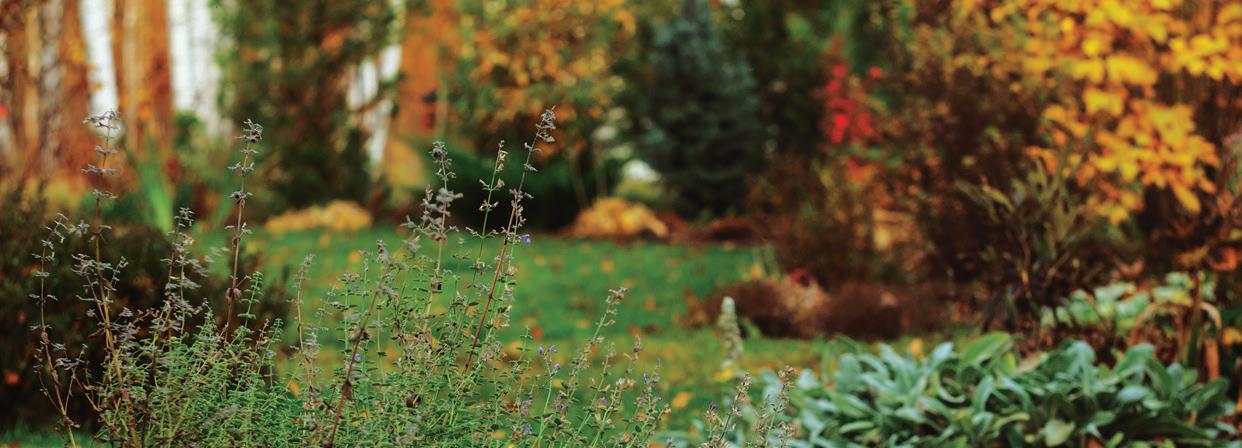
Follow these easy tips to help keep your garden healthy and your plants happy!
Plant cold-season vegetables outdoors, including crops such as lettuce, broccoli, and carrots.
Begin planting new spring-flowering trees and shrubs, such as camellias and azaleas.
Prepare potted plants to be brought indoors by pruning, treating pests, and acclimating them to the indoor environment.
Start planning your spring and summer gardens. Make note of what worked and what didn’t over the last year, and make plans to fix what went wrong or try something new this year.

Plant spring-flowering bulbs, such as daffodils and tulips, by Thanksgiving.
Apply a 2- to 4-inch layer of protective mulch.
Compost fallen leaves and plant debris.
Turn off irrigation systems and drain their lines.
Harvest hollies and evergreens for indoor holiday decorations.
Make your own festive wreaths and garlands in our classes on December 3, 8, & 10!
Wrap trunks of young trees in areas prone to large temperature changes to protect them from cold damage.
Safely sharpen, clean, and oil tools and pruners.
Drain the fuel tanks of your gas-powered machines before putting them away for the winter.
Prune deciduous trees and non-spring-flowering trees and shrubs.
Remove dust from house plants by gently cleaning with lukewarm water.
Avoid walking on lawns during a frost to protect your grass from damage.
Keep bird feeders full, and refresh water during freezing temperatures.
Show your appreciation for birds during Feathered February at the Garden! Join us for bird events and educational programs all month long.
Start pruning ornamental grasses, roses, and perennials after Valentine’s Day.
Spread compost in any beds that you will plant in April.
Collect and test soil samples from all areas of your landscape.
Begin fertilizing shrubs as needed according to the results of your soil test.
Prepare your vegetable garden for spring by tilling the soil and selecting seeds.
Start dividing perennials and ornamental grasses to create more plants to enjoy.
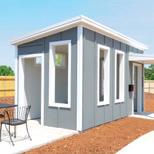

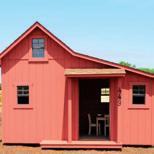 Photo
Photo
Answer #1
The word ornithology comes from the late 16th-century Latin word ornithologia meaning, "bird science" from the Greek ὄρνις ornis ("bird") and λόγος logos ("theory, science, thought").
Answer #2
D. 1,000 BPM
A bird’s heartbeat is much slower when it is at rest. For example, a crow’s resting heart rate is 345 beats per minute (BPM).
Answer #3
In general, bird egg shells are made of calcium carbonate, and so the default color is white.

Answer #4
Owls are primarily nocturnal hunters, and they have adapted many specializations that allow them to be extremely effective when hunting at night, such as the ability to fly silently, specialized hearing, and uniquely shaped eyes that allow them to spot prey.

Answer
Woodpeckers can peck up to 20 times in a second, which is too fast to be observed by the human eye. The beak of a woodpecker is strong and has a pointed tip that allows the woodpecker to pierce the bark of trees easily. The bird also has a long tongue that helps it reach deep into the tree trunk.
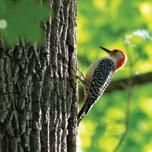
0-1
Come see us soon to learn even more about birds at the Garden!
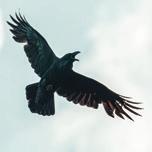
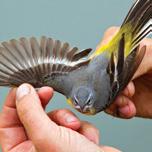
Not bad! You’re on your way to becoming a bird expert!
4-5
Well done! You must be an ornithologist yourself!
Member Corner
Our members provide essential support to the Garden and our mission every day.
Garden membership is your passport to gardens across North America! Members can enjoy access to reciprocal benefits at over 300 gardens nationwide through the American Horticultural Society’s Reciprocal Admissions Program.

Learn more about the benefits of Garden membership at: �� hsvbg.org/membership ✉ membership@hsvbg.org MOBILE-BUTTON 256-830-4447 ext. 255
For over 25 years, the Garden has welcomed guests from near and far to explore the dazzling light displays at Galaxy of Lights. The event has become a beloved holiday tradition, a chance for guests of all ages to enjoy the Garden when it’s decked for the holiday season and to make memories with loved ones during this festive time of year.
But what guests don’t often see is the hard work and dedication of hundreds of volunteers and staff members who bring the experience to life each year. Take a look behind the lights to meet a few of the people who make it all possible!
Teresa has supported Galaxy of Lights as a volunteer since 2014. As Galaxy Volunteer Lead, Teresa collaborates with Garden staff and volunteers to coordinate the details of many aspects of Galaxy, including the children’s artwork, the signs that recognize Galaxy’s sponsors, the volunteer groups that support each night of the event, and the placement of over 2,000 luminaries that line the path.
It’s really fun to see how everything comes together. With all of the different areas we’re involved in, we get to see the majority of [the behind the scenes]. … [Seeing guests enjoy Galaxy] makes me happy. It feeds my soul by feeding theirs.”
Bob has served as the Galaxy Crew Chief for over six years and has volunteered with the group for many more. As Galaxy Crew Chief, he leads the maintenance, installation, and deinstallation of the traditional light displays featured in the Galaxy experience. Along with key members of the Galaxy Crew, he works with the Garden staff year-round to ensure everything is ready for opening night in November.
The best part of it is working with a bunch of great people, and you’re doing something that’s useful for the Garden. … It’s just a great experience. It’s a Huntsville tradition!”
The Garden is growing and looking for candidates in hospitality, horticulture, facility maintenance, and more.

Before joining the Garden staff, Steven first started volunteering with the Galaxy Crew eight years ago. Now in his staff role as Lighting Design and Programming Manager, he works with a team of staff and volunteers to incorporate new lighting technology and equipment into Garden experiences like Galaxy of Lights, managing every step from design to testing to installation.
These experiences are only possible at the Garden. They’re immersive; they’re on a grand scale. At the Garden, we have what no one else does, and we continue to bring a little more magic each year to keep the surprises alive.”
In 2022, Galaxy of Lights Walking Nights will take place November 11-27 (Closed Thanksgiving Day) and December 17 –January 1 (Closed Christmas Day). Driving Nights will take place December 1-16. To learn more and to purchase tickets, visit hsvbg.org/Galaxy.

The Corporate Partner program is designed to strengthen the relationship between the Huntsville Botanical Garden and the corporate community in the Greater Huntsville Area. Through the annual support of these Corporate Partners, we can provide first-class programs that allow children, families, and Garden guests to connect to plants and gain a deeper understanding of the role they play in their own environment.
Platinum
Huntsville Area Association of Realtors & ValleyMLS.com
Silver
Aviagen, Inc.
Blue Cross Blue Shield of Alabama
Dynetics, Inc.
Edward Jones –Financial Advisors, Brenda Armstrong, CFP® | CRPC ®
John Butterfield, CFP® | AAMS®
Kitty Davenport, CFP® | AAMS®
LG Electronics
Bronze
Aerojet Rocketdyne
Barrios Technology
Blue Origin
Edward Jones –Financial Advisor, Andy Johnson, CFP® | ChFC ®
Invariant Corporation
MTSI
PZI International Consulting
RJ Young
SCHOEL
Thompson Gray, Inc.
Twickenham Advisors
Venturi, Inc.
Supporter a.i. Solutions
BAE Systems Shared Services, Inc.
BancorpSouth, Inc.
Kona Grill
MTS
Northwestern MutualShane Stromei
PeopleTec
Van Valkenburgh & Wilkinson Properties
Vulcan Materials Company
Have you considered including the Garden in your estate plans?

This kind of generous donation is called a planned gift.
There are a variety of ways to support the Garden through a planned gift: a bequest intention, appreciated assets, a charitable remainder trust, life insurance, retirement plans, and more. With planned giving, any gift is meaningful.
Funds from planned gifts are responsibly invested, which provides reliable financial support for the Garden year after year.
Just as a perennial flower adds perpetual beauty by returning and multiplying each year, a planned gift will support the Garden for future generations to come.
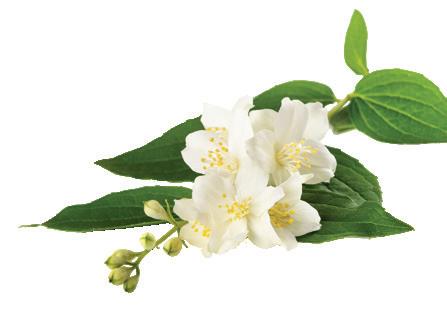
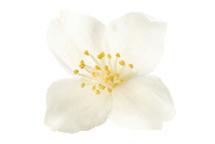
We would be pleased to work with you and your financial or tax advisor to establish a legacy gift that meets your philanthropic and financial goals.
Learn more about planned giving at:
�� hsvbg.org/planned-giving
Learn more about the Corporate Partner program at:
�� hsvbg.org/corporate-partners
✉ development@hsvbg.org
MOBILE-BUTTON 256-830-4447 ext. 257
Shown here in autumn shades of yellow and green, the Chinese fringe tree continues to delight and inspire throughout every season.

An ecosystem of native plants that creates a healthy bird habitat
4747 Bob Wallace Ave. Huntsville, AL 35805

“Each moment of the year has its own beauty.”
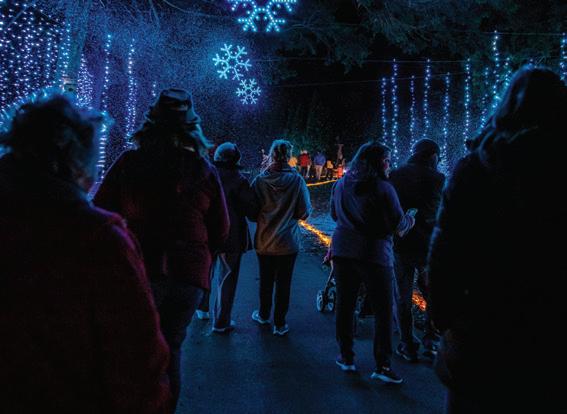
Like what you read?
We want to hear from you! Scan the QR code to take our survey.

This magazine is printed on recycled paper by an FSC ® certified printer.

 Presented by
Presented by